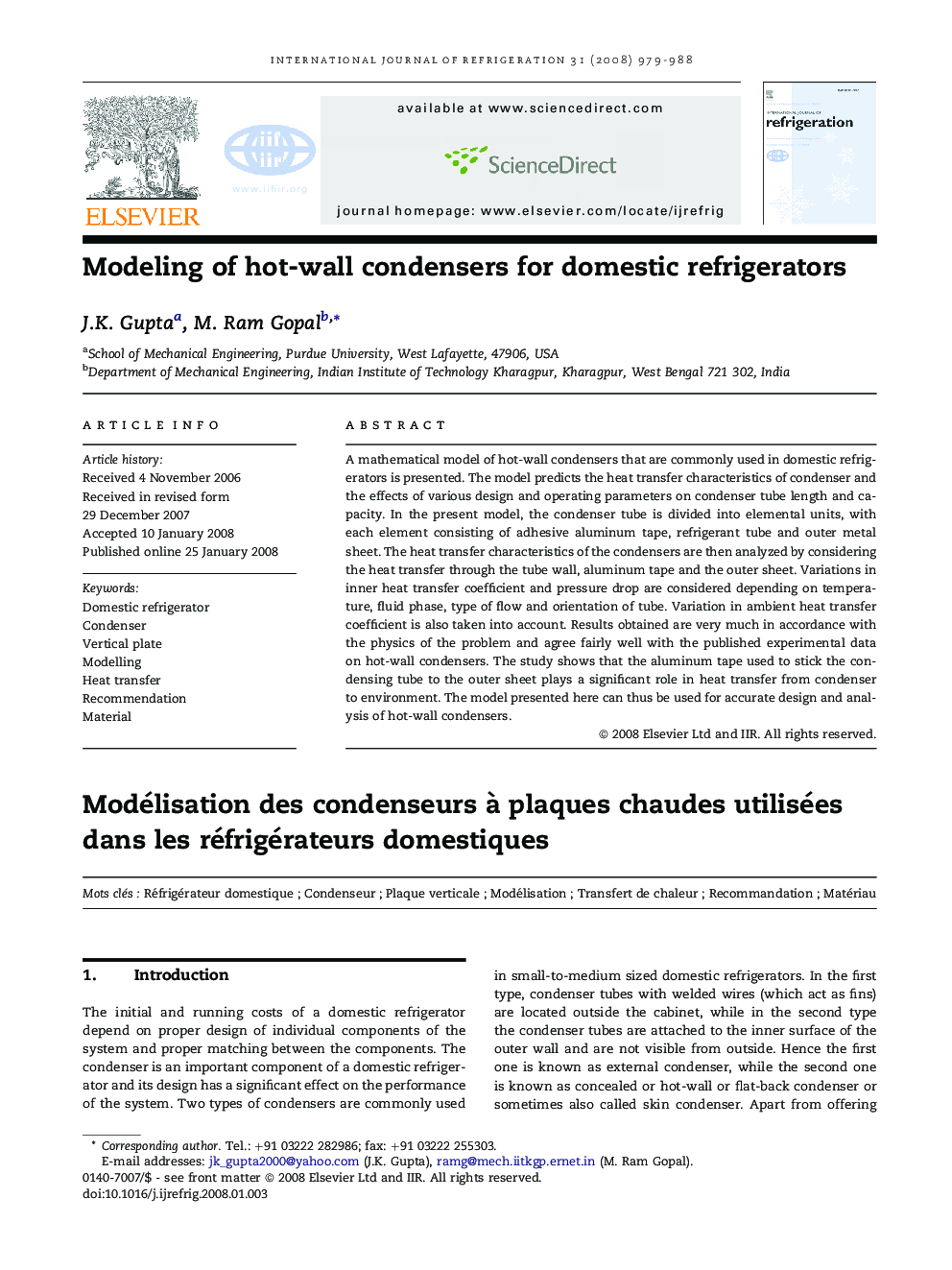| Article ID | Journal | Published Year | Pages | File Type |
|---|---|---|---|---|
| 789924 | International Journal of Refrigeration | 2008 | 10 Pages |
A mathematical model of hot-wall condensers that are commonly used in domestic refrigerators is presented. The model predicts the heat transfer characteristics of condenser and the effects of various design and operating parameters on condenser tube length and capacity. In the present model, the condenser tube is divided into elemental units, with each element consisting of adhesive aluminum tape, refrigerant tube and outer metal sheet. The heat transfer characteristics of the condensers are then analyzed by considering the heat transfer through the tube wall, aluminum tape and the outer sheet. Variations in inner heat transfer coefficient and pressure drop are considered depending on temperature, fluid phase, type of flow and orientation of tube. Variation in ambient heat transfer coefficient is also taken into account. Results obtained are very much in accordance with the physics of the problem and agree fairly well with the published experimental data on hot-wall condensers. The study shows that the aluminum tape used to stick the condensing tube to the outer sheet plays a significant role in heat transfer from condenser to environment. The model presented here can thus be used for accurate design and analysis of hot-wall condensers.
